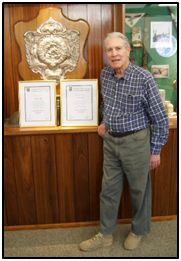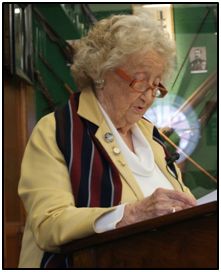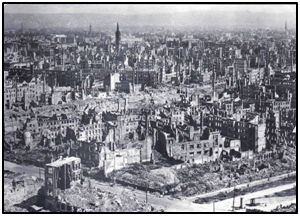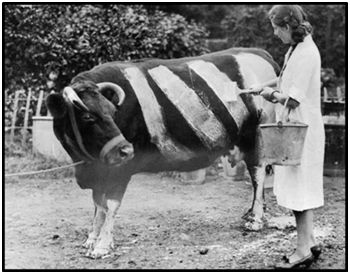


Newsletter/Nuusbrief 157
October/Oktober 2017
The September meeting took place in Grahamstown on Saturday 9th. During the morning members and their guests visited the site of the 1846 ambush at Hellspoort, where Pat Irwin gave an account of the event. On the return journey the party stopped at the farm Brakkloof, where Geoff Brown told the story of the erection of a fence some 140 years ago (which is still standing) and its association with Trooper Frank Hillier, killed during the 9th Frontier War and buried alongside King Sandile near Stutterheim.The tour ended with a visit to the site of the Anglo-Boer War trenches manned by St Andrew’s College Boys during Smuts and Kritzinger’s invasion of the Cape in March 1901.
The regular monthly meeting took place at 14h00 in The First City Regiment’s Drill Hall and museum in Hill Street, Grahamstown.
In lieu of the members’ slot, Honorary Life Membership certificates were presented to Professor Ian Copley and Jenny Copley for their contributions to the Society over many years. Both are former national chairmen.

Ian Copley with Honorary Life Membership certificates.
Photo: Anne Irwin.
The curtain raiserElisabeth Milln, her subject being Life in the Women’s Auxilliary Air Force in World War II. Having joined the WAAFs at the age of 17 in July 1940 after the retreat from Dunkirk, Elisabeth served until she was demobilised just before D-Day due to being pregnant with her first child. Although the age of enlistment was 18, when Elisabeth presented herself at the recruiting office no birth certificate was asked for. After an initial period of basic training, she was drafted into the Signals Section of the WAAFS as a tele-printer operator and sent to RAF Cranwell for further training – a period she remembered as a new adventure. From there she was posted to a Coastal Command Station at Plymouth, from where 15 Group, using mainly Sunderland Flying Boats, patrolled the ‘Western Approaches’. Although the signal station was underground, Elisabeth had vivid memories of the bombing of the city due to the proximity of its Royal Navy Dockyards.

94-year old Elisabeth Milln addressing SAMHSEC
on her service in the WAAFs during the Second World War.
Photo: Anne Irwin.
In early 1941 she was posted to heavily-bombed Liverpool, still with Coastal Command, but working at the combined HQ of the Royal Air Force and the Royal Navy. Although again located underground, she was in the centre of the city and would emerge each morning to see the fresh bomb damage and rescue work going on. She described the ‘utter devastation’ resulting from the nightly raids and said that although she has in subsequent years returned to the rebuilt city on several occasions, in her mind it is still these devastated streets which she sees. It was there that she met her future husband.
It was some time after this that she had applied to become a wireless operator, hoping eventually to become a signals officer, and for this purpose she was sent to Edinburgh. After her experiences of the bombing of Plymouth and Liverpool, the RAF decided that she needed a quiet place and she was subsequently posted to an RAF station near Glasgow which operated the famed FaireySwordfish aircraft. She was next posted to Aberdeen and then to Solway Firth. On one occasion, while on duty, a Catalina flying boat found itself in difficulties and called for assistance. Without any experience of what to do, Elisabeth successfully ‘talked it down’, winning the gratitude of the pilot. She was recommended for a ‘Mentioning in Despatches’, but her WAAF commanding officer decided that she was just doing her duty, and so it did not materialise.
Elisabeth noted that the RAF had spent a lot of time and money in training her for various skills, which came in handy in her next posting to Bomber Command at Driffield in Yorkshire where she became a ‘Sergeant-Watchkeeper’ – an ambiguous and deliberately inconspicuous term. It involved keeping and largely memorising the details of bombing raids yet to be carried out: timing, navigation routes, bomb loads, signal details etc. Bomber Command HQ worked out all these details and passed them, in total, to whichever Sergeant-Watchkeeper was on duty that particular day for the bomber squadrons which were to take part. Her duty was to separate the information and pass it on to the officer in charge of each section. Overall raid details were only passed on to the crews at the briefing before a raid. Looking back, she feels it was a tremendous responsibility and expressed her amazement that such young people were entrusted with these details. She was then posted to Lissett, also in Yorkshire, part of 4 Group Bomber Command. Here the aircraft, most of which were Halifax bombers, were ‘stacked’ before a raid.
Unlike in Coastal Command, where she seldom if ever saw air crew, Elisabeth described the much freer mixing of all ranks in Bomber Command, and the much stronger feelings of unity and friendship. The Sergeant-Watchkeepers ate with the aircrews, even to sharing their egg rations – a perk duty aircrews were given prior to taking part in a raid. She made brief mention ofsome of the casualties and also developments in plastic surgery for those who were badly burnt, noting particularly the pioneering work of Archibald McIndoe in this respect. At Lissett she worked solely for Intelligence Operations and had no drills or administrative duties. She also described the secrecy under which the Watchkeepers worked: they never shared information with each other and even her husband had no idea of her work until after the war. She described how she had blocked from memory so many things of that period, but could remember some of the places bombed – marshalling yards, factories and other places of strategic importance. Elisabeth also recounted some of the hazardous routes flown by the bomber, such as over the Ruhr, along the Rhone Valley and the Texel Islands. The bombers had to cope with very heavy defences – both anti-aircraft ground fire and night fighters – in these places.
Elisabeth concluded her brief, but inspiring and memorable talk by saying that she had ‘never forgotten the young men who gave so much, so that her children could grow up in a free world’.
For a poignant and elemental account of Dunkirk, the classic short novella The Snow Goose by Paul Gallico is recommended. It is available online at: https://archive.org/stream/TheSnowGoose_350/snowgoose_djvu.txt
The main lecture was presented by Professor Emeritus Malvern Van Wyk Smith on Poetry of the Anglo-Boer War. This interesting overview was largely based on his book Drummer Hodge: The poetry of the Anglo-Boer War 1899-1902. Malvern discussed the response of poets, mainly English, to the war and read excerpts from several poems. Kipling, for example, created a popular image of the British soldiers through his Barrack-Room Ballads. Other established poets include Hardy, Henley, Belloc, Edgar Wallace, A.E. Houseman and Swinburne. So many of the rank and file were sufficiently literate to write home during the war, inadvertently becoming personal war correspondents.
There were huge outpourings of verse, some for, some against the war, throughout Europe, America and the rest of the Empire. The bulk of the poetry about the war is loyalist verse, tempered by compassion for the soldiers, although much of it is doggerel, and a substantial body of poetry expresses doubt, protest or pacifism. An extensive group of poems were produced by combatants on both sides, with every kind of poetry being attempted. Apart from rousing balladry, poems also captured the glowing heroics of officers leading their men into assault.
William Watson is the most substantial poet to support the anti-war campaign. He was opposed not so much to imperialism as to its total misdirection in a war against a people whom he saw as preserving exactly those virtues that an expanding industrial Britain had lost. Much of the pro-Boer movement in Britain and Europe was inspired by the sentiments Watson articulated.
The soldier-poets of the Anglo-Boer War were prolific, their poems ranging from blunt accounts of battle to cries of exasperation as well as nonsense rhymes. Among the most searing of front-line productions is an anonymous ballad, The Black Watch at Magersfontein, based on the disastrous engagement of the Highland Brigade at Magersfontein in which the Black Watch regiment was all but halved. The poem gives a crude but vibrant account of the day’s action, closing with an excoriating attack on the commanding officer, Lord Methuen, whose reputation in England had become somewhat inflated.
Such poems point directly at the more famous satirical work of Siegfried Sassoon that would emerge from the First World War.
The Boers were not their own best spokesmen. Largely semiliterate and leading a highly mobile existence, they produced (or preserved) only some fairly naïve commando songs and stumbling balladic narratives. Most of their poems were by-products of the enforced inaction of concentration and prisoner of war camps. The first generation of Afrikaans poets after the war filled the gap with a number of poems probably more remarkable than anything in English. The most prominent of these poets were Eugène Marais, Jan F.E. Celliers, J.D. du Toit (‘Totius’), and C. Louis Leipoldt. Celliers was the only one of these to have served extensively on commando during the war. His Dis Alreflects the essence of Boer devastation.
Kitchener’s scorched-earth policy, the shipping of prisoners of war to distant shores, the execution of Cape Rebels, the deaths of thousands of women and children in concentration camps, and the final trauma of defeat, all ensured a growing rather than diminishing national preoccupation during the next decade with injustice, resentment and self-determination.
Malvern concluded that there was clearly much indirect influence on the poetry of the First World War in terms of the changing sensibilities that the Anglo-Boer War verse recorded.
Future meetings and field trips/ Toekomstige byeenkoms en uitstappe
The next SAMHSEC meeting will be on 9th October 2017 at 19h30 at the Eastern Cape Veteran Car Club in Conyngham Road, Port Elizabeth. The curtain raiser will be by Ian Copley on Chilean Naval Wars involving the‘Esmeralda’ and the main lecture by Anton de Wit on Human trophy hunting during times of war.
Matters of general interest / Sake van algemenebelang
Parades
This September marks the 99th Anniversary of the Battle of Square Hill.
The Executive Committee of the Port Elizabeth Branch of the South African Legion of Military Veterans cordially invites you to attend the Battle of Square Hill Parade, to be held at the Aloe White Ensign MOTH Shellhole Garden of Remembrance on Sunday, 24th September 2017 at 10h30 for11h00.This Parade will include a Medal Presentation Ceremony. Further details may be obtained from the Legionnaire Brian Klopper at klophamer@yahoo.com
World War I Centenary Years / Eerste Wêreldoorlog Eeufeesjare
Two major engagements on land took place during October 1917
On the Austro-Italian Front, the Twelfth Battle of Isonzo, better known as the Battle of Caporetto took place between the 24th October and 10th November.
This was one of the more spectacular successes of the war by any belligerent. It saw the Austro-Hungarian forces (nine Divisions), strongly supported by the German army under General Otto van Below (six Divisions) making a major breakthrough on the Italian lines along the Isonzo River Front which had hitherto largely been a stalemate situation. This was despite an Italian overall numeric superiority of 41 Divisions to 35. Italian intelligence was, however, notably poor.
Although the Italians, who up to that point had tended to hold the initiative or launch the offensives along that front, the Central Powers’ offensive took them completely by surprise, the Austro-Hungarian/German forces gaining 25km of ground on the first day. Eventually the over-extended Austro-Hungarian/German supply lines allowed General Cadorna, the Italian Chief of Staff to conduct something of an orderly withdrawal, once again stabilizing the front line, although well to the west of where it had been. The Italians suffered 300 000 casualties, mostly prisoners, and lost virtually all of their artillery. The government of Italy fell and Cadorno was dismissed from his post.
The Italian defeat however created alarm among the Allies and, as a result, for the first time led to increased military support for the Italians – six French and Five British Divisions supported by air contingents. [The Firstto the Eleventh Battles of Izonso are covered in Newsetters 129 – 155].
On the Palestinian Front, the Third Battle of Gaza, also known as the Battle of Beersheba,ran from 31st October to 10th November.
The two failed attacks on Gaza in March and April 1917 (see Newsletters 150 and 151) resulted in General Murray’s dismissal and the appointment of General Edmund Allenby’s to command, and being tasked with the capture of Jerusalem by Christmas 1917.
Allenby started his campaign by relocating his GHQ from a first class Cairo hotel to the front line, an act designed to boost the flagging morale of the Allied troops. He also, despite political pressure, declined to move until he felt confident of victory, amassing 88 000 troops against the Ottoman defenders 35 000 who were stretched over a 40km line. One of Allenby’s key objectives was to secure the wells of Beersheba’s with their reliable water supply. The battle was initiated by attacking the Turks at their weakest point near Beersheba itself rather than the frontal attack on the strongest point which had characterized the Second Battle of Gaza. A six-day artillery bombardment on the strongest point of the Turkish line had in the meantime successfully convinced the Turks of the probability of a full frontal attack in that sector. A series of diversionary attacks exploring weaknesses on other parts of the Turkish line, aided by other the activities of the Royal Flying Corps which commanded the sky and suppressed German aerial reconnaissance, added to their confusion.
Following an Ottoman strategic withdrawal to Tel es Sheria and the exposure of their flanks, Allenby pressed home his attacks and by 7th November the Turks had abandoned Gaza opening the way for Allenby’s advance on Jerusalem.
Naval engagements
A German naval campaign with some army support, Operation Albion, took place in the east Baltic Sea during October 1917 at the time of the Russian Revolution. Its purpose was to capture and occupy the Western Estonian Archipelago and so lay the Russian capital, St Petersburg, open to attack. The major engagement was the Battle of Moon Sound which was fought between the Imperial German Navy (Kaiserliche Marine)on the one hand and the Imperial Russian Navy and three submarines of the Royal Navy on the other, from 16th October until 3rd November 1917. It involved a complicated series of actions including shore landings, tactical errors and confused orders, particularly on the part of the Russians.
The Germans were ultimately victorious but at some cost, having lost seven minesweepers, nine trawlers and one torpedo-boat, most of which were damaged or destroyed by mines. Approximately 200 men were killed and 200 wounded. They captured 20,130 prisoners, 141 Russian guns including 47 heavy pieces and 130 machine guns. The Russians lost one pre-Dreadnought battleship, a destroyer and a submarine, and a total of about 100 killed and a similar number wounded. This area was also the scene of the August 1915 Battle of the Gulf of Riga. On that occasion the German navy and army had failed to achieve their objectives.
October 1917 saw the introduction of the convoy system in the Mediterranean Sea. The system had proved highly successful since its implementation on Atlantic crossings in June 1917, dramatically reducing the tonnage of ships lost due to the action of U-boats.
A note on British women in WWI
During the First World War 100,000 women served in the uniformed services, with around 50% connected with nursing and very few (officially) anywhere near combat.In 1917 the Women’s Auxiliary Army Corp (WAAC) was formed, offering jobs as chauffeurs, clerks, telephonists, waitresses, cooks and instructors. Also formed in 1917 was the Women’s Royal Naval Service (WRNS), initially only allowing women to do ‘suitable’ (i.e. domestic) work to release male sailors to take on combat duties. On April 1st 1918 the Women's Auxiliary Air Force (WAAF) was created, with women working as clerks, fitters, drivers, cooks and store keepers. [http://www.nationalarchives.gov.uk/womeninuniform/wwii_intro.htm]
Websites of interest/Webwerwe van belang
Historic ships and boats
[US] Civil War mystery solved? Confederate sub's torpedo may have killed its crew
Charles Q Choi Live Science 26th August 2017
https://www.livescience.com/60239-confederate-submarine-torpedo-may-have-killed-crew.html?utm_source=lsa-newsletter&utm_medium=email&utm_campaign=20170828-lsa
Pre-First World War
The only naval engagement in Algoa Bay
Dean McClelandPort Elizabeth of Yore Blog 11th September 2017
http://thecasualobserver.co.za/port-elizabeth-yore-naval-engagement-algoa-bay/
World War I
German WW1 U-boat found off Belgian coast
BBC NewsMagazine 19th September 2017
http://www.bbc.com/news/world-europe-41318195
The deadliest weapons of the First World War
Malcolm Higgins War History Online 16th September 2017
http://www.warhistoryonline.com/instant-articles/deadliest-weapons-first-world-war.html
Unseen interviews with WW1 veterans recount the horror of the trenches
The Telegraph 14th September 2017
http://www.telegraph.co.uk/history/world-war-one/10681656/Unseen-interviews-with-WW1-veterans-recount-the-horror-of-the-trenches.html
Women involved in WW II remember and reflect
Edith Hunter, WAAF
WARGEN 14th September 2017
https://war-gen.com/2017/09/14/edith-hunter-womens-auxiliary-air-force/
[See also other links at the end]
Lest we forget: memoirs of a nonagenarian
Cathy Dippnall Contributoria May 2015
http://www.contributoria.com/issue/2015-05/551106a98357f36b73000107.html
We were a cheerful cargo
Svetlana Alexievich The PARIS REVIEW 25th July 2017
https://www.theparisreview.org/blog/2017/07/25/we-were-a-cheerful-cargo/
Remembering my World War Two fiancé
BBC News Magazine 13th November 2016
http://www.bbc.com/news/magazine-37936913
World War II
A WWII train journey across South Africa with the Royal Navy
Glenis Rix HubPages 22nd August 2017
https://hubpages.com/literature/Small-Town-Boy-to-South-Atlantic-Seaman-Chapter-6-My-Train-Journey-Across-South-Africa
Frankfurt WW2 bomb defused after mass evacuation
BBC News 3rd September 2017
http://www.bbc.com/news/world-europe-41140949
Flak towers: Massive concrete buildings raised by the Nazis to protect Germans from aerial attacks
Goran Blazeski The Vintage News 25th August 2017
http://www.thevintagenews.com/2017/08/25/flak-towers-massive-concrete-buildings-raised-by-the-nazis-to-protect-germans-from-aerial-attacks/
The horror of war! German cities destroyed by the intense Allied bombing campaign of 1944-45.
Carl Stroud The Sun 8th September 2017
https://www.thesun.co.uk/news/4420890/photos-hamburg-war-ravaged-year-after-ve-day/

Over 90% of the Mediaeval and largely city of Dresden was destroyed
by a bombing raid in February 1945. A combination of high explosives bombs,
firebombing (incendiaries) and strafing of survivors from the air, was used.
Cold War and post-Cold war
Navy ‘Orion Hammer’ investigation into USS John McCain collision has turned up no evidence of cyber attack
Sam LaGrone USNI News 25th August 2017
https://news.usni.org/2017/08/25/navy-orion-hammer-investigation-uss-john-mccain-collision-turned-no-evidence-cyber-attack
A war of a different kind
The Gombe War of Tanzania: A four-year-long guerrilla war between two groups of chimpanzees
Boban Docevski TheVintage News 31st August 2017
http://www.thevintagenews.com/2017/08/31/the-gombe-war-of-tanzania-a-four-year-long-guerrilla-war-between-two-groups-of-chimpanzees/
Resource materials of military historical interest/
Bronmaterieel van krygsgeskiedkundigebelang
BOOK REVIEW
Showalter Dennis 2016 Instrument of War - The German Army 1914-18 Oxford Osprey 304 pages. Paperback edition is available from Amazon for US$16.00
At the heart of this book is a study of the nature of the German army and its senior officers, and how that impacted on the army's ability to adapt to the circumstances it faced during the First World War. This was an army that had planned for a short war in the west, and then had to come up with new plans after the initial German advance was stopped at the Marne. Showalter examines the nature of the German army, the experience and character of its senior officers, and how the army and its officers attempted to cope with the new circumstances of 1915-18.
One of the most interesting aspects of this book is that it gives us an almost entirely German perspective on events. In many cases this was very different to our familiar story of the war. Perhaps the best example of this is the battle of the Somme of 1916. In British accounts this was a battle that began with a disaster, and ended as at best a costly draw, and at worst a pointless bloodletting that made almost no progress. The German view was very different - there the battle was seen as stretching the army almost to breaking point, and many senior commanders argued that the army wouldn't be able to stand up to another attack on the same scale. As a direct result of the battle the Germans decided to withdraw from the Somme front to the Hindenburg Line, abandoning a large area of conquered territory. Again, the Third battle of Ypres appears in a different light, with the later 'bite and hold' attacks forcing the Germans repeatedly change their defensive plans, after the British learnt to take advantage of their predictable counterattacks.
If there is a flaw with this book, it is that the author gives the impression that a German defeat was inevitable, because of problems with the nature of the German army. One can't help think that hindsight plays a part in this - the Germans were victorious on just about every front apart from the Western Front, and came close to success there in 1914 and the spring of 1918. Who knows what might have happened if the troops wasted at Verdun had instead been used to knock Russia out of the war a year early, or if the Allied response in 1918 had been only a little less effective? Other than that this is an excellent study of the German army at war during the First World War, which helps explain how an army with almost no recent military experience (not having fought a major war since the 1870s), became seen as the most effective individual army of the First World War, capable of conducting a war on two fronts, and facing the main military efforts of France and Britain.
This review by John Rickard first appeared in HistoryofWar.org Update for August 2017. It is reproduced here with his full permission.
Dennis Showalter, is a Professor of German Military History at Colorado College. Widely published and acknowledged in the field of German military history, he has been president of the American Society of Military History.
Members are invited to send in to the scribes, short reviews of, or comments on, books, DVDs or any other interesting resources they have come across, as well as news on individual member’s activities. In this Newsletter, there have been contributions by Malcolm Kinghorn, Barry Irwin, Michael Irwin, Peter Duffel-Canham and John Rickard.
Chairman: Malcolm Kinghorn: culturev@lantic.net
Secretary: Franco Cilliers: Cilliers.franco@gmail.com
Scribes (Newsletter): Anne and Pat Irwin: p.irwin@ru.ac.za
Society’s Website: http://samilitaryhistory.org
TAILPIECE:

Camouflage practice in the UK in 1940 after cattle had been strafed.